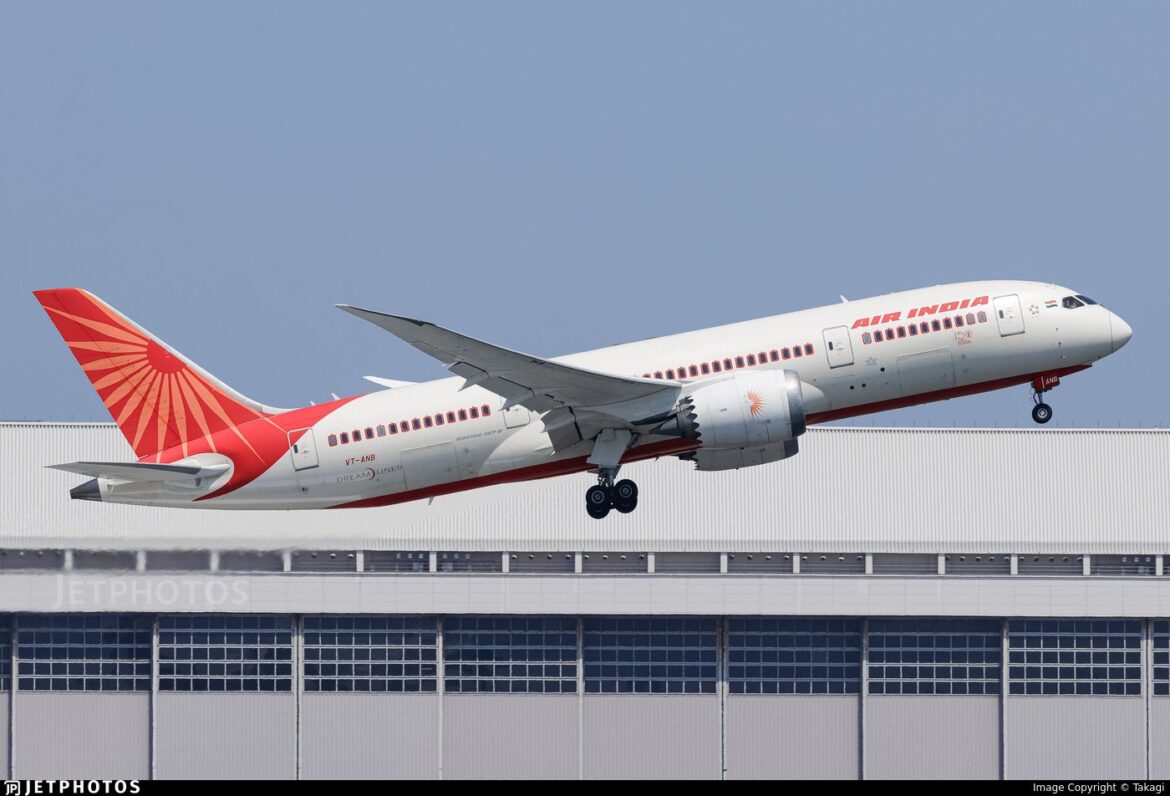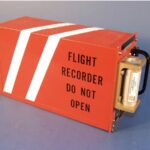Did a cut in fuel supply to both engines of the Boeing 787-8 Dreamliner within a gap of a second lead to the crash of Air India flight 171 at Ahmedabad International Airport on June 12?
A shift in fuel control switches three seconds after Air India’s Boeing 787-8 aircraft became airborne resulted in a loss of engine thrust and shut down both engines moments before the plane crashed on June 12 in Ahmedabad, killing at least 260, says the preliminary investigation report.
It reveals that the fuel cutoff switches of both engines “transitioned from Run to Cutoff position one after another with a time gap of 01 second.”
The Aircraft Accident Investigation Bureau (AAIB) report further mentions the Air India flight’s cockpit voice recorder, revealing one pilot asking another why he switched off the fuel supply to the engine, and the second replied that he had not. Though the report has hinted at a technical snag or mechanical failure that led to the cutting off of fuel supply to both engines, it did not state what triggered the snag or the fuel cutoff.
On June 12, the AAIB was notified of an accident involving Air India’s B787 aircraft bearing registration VT-ANB at Ahmedabad. The ill-fated plane was operating Flight AI171 from Ahmedabad to Gatwick and crashed immediately after takeoff, the notification said.
After the notification of the crash issued by the Airport Authority of India and Air India—the airline operator—a team of five officers from AAIB, including the DG, AAIB, reached Ahmedabad. Three more officials from the Director General of Civil Aviation’s Air Safety Directorate also joined to assist in the accident site activities. They were all put at the disposal of the DG, AAIB.
The initial notification of the accident was also sent to the National Transportation Safety Board (NTSB), USA, to meet the International Civil Aviation Organization (ICAO) requirements, which represented the State of Design & Manufacture. The AAIB had notified that the fatalities also included citizens from the United Kingdom, Portugal, and Canada.
A team led by the NTSB Accredited Representative, comprising representatives from Boeing, GE, and the FAA, arrived in Ahmedabad to participate in the investigation. A team of officials from AAIB, UK, joined them. The DG-AAIB appointed an investigation team comprising Sanjay Kumar Singh as Investigator-in-Charge, Mr. Jasbir Singh Larhga as Chief Investigator, and Vipin Venu Varakoth, Veeraragavan K., and Vaishnav Vijayakumar as Investigators. Experienced pilots, engineers, aviation medicine specialists, aviation psychologists, and flight recorder specialists were taken on board as Subject Matter Experts (SMEs) to assist the investigation in their domain expertise.
The preliminary report said that the aircraft achieved the maximum recorded airspeed of 180 knots, and immediately thereafter, the Engine 1 and Engine 2 fuel cutoff switches transitioned from the RUN to CUTOFF position one after another with a time gap of 01 second.
The Engine N1 and N2 began to decrease from their takeoff values as the fuel supply to the engines was cut off. In the cockpit voice recording, one of the pilots is heard asking the other why he cut off. The other pilot responded that he did not do so. The CCTV footage obtained from the airport showed the Ram Air Turbine (RAT) getting deployed during the initial climb immediately after liftoff. No significant bird activity is observed in the vicinity of the flight path. The aircraft started to lose altitude before crossing the airport perimeter wall.
While tracking the developments that led to the crash, the report said that on June 12, Air India’s B787-8 aircraft bearing registration VT-ANB arrived at Ahmedabad airport operating flight AI423 from Delhi. The aircraft was parked at bay 34. The crew of the previous flight (AI423) had made a Pilot Defect Report (PDR) entry for the status message “STAB POS XDCR” in the Tech Log.
The troubleshooting was carried out as per FIM by Air India’s on-duty AME, and the aircraft was subsequently released for flight as it was scheduled to operate flight AI171 from Ahmedabad to Gatwick. It was to be operated by the flight crew comprising an ATPL holder PIC, a CPL holder co-pilot, and ten cabin crew. Both pilots were based in Mumbai and had arrived in Ahmedabad the previous day. They had an adequate rest period before operating the said flight. The co-pilot was Pilot Flying (PF), and the PIC was Pilot Monitoring (PM) for the flight.
The crew of flight AI171 arrived at the airport, underwent a preflight breathalyzer test, and were found fit to operate the flight. The crew was seen arriving at the boarding gate in the CCTV recording. There were 230 passengers on board, of whom 15 were in business class and 215 in economy class, including two infants.
Fuel on board was 54,200 kg, and as per the load and trim sheet of the flight, the takeoff weight was 213,401 kg (maximum allowed—218,183 kg). The takeoff weight was within allowable limits for the given conditions. There were no ‘Dangerous Goods’ on the aircraft.
The aircraft was observed departing from bay 34. After taxi clearance, it taxied from the bay to Runway 23 via Taxiway R4, backtracked, and lined up. After takeoff clearance, it started rolling.
The aircraft achieved the maximum recorded airspeed of 180 knots IAS, and immediately thereafter, the Engine 1 and Engine 2 fuel cutoff switches transitioned from the RUN to the CUTOFF position one after another with a time gap of 01 second. The Engine N1 and N2 began to decrease from their takeoff values as the fuel supply to the engines was cut off.
In the cockpit voice recording, one of the pilots is heard asking the other why he cut off. The other pilot responded that he did not do so. No significant bird activity is observed in the vicinity of the flight path. The aircraft started to lose altitude before crossing the airport perimeter wall.
The report further says that one of the pilots transmitted “MAYDAY MAYDAY MAYDAY.” The ATCO inquired about the call sign. ATCO did not get any response but observed the aircraft crashing outside the airport boundary and activated the emergency response. Immediately, the crash fire tender left the airport premises for rescue and firefighting. They were joined by the Fire and Rescue Services of the Local Administration.
The report says that further investigations are progressing as the wreckage site activities, including drone photography/videography, were completed, and the wreckage was moved to a secure area near the airport. Both engines were retrieved from the wreckage site and quarantined at a hangar in the airport. Components of interest for further examination were identified and quarantined. Fuel samples were taken from the bowsers and tanks used to refuel the aircraft and were tested at the DGCA’s lab and found satisfactory. A very limited number of fuel samples could be retrieved from the APU filter and the refuel/jettison valve of the left wing.
The testing of these samples would be done at a suitable facility capable of carrying out the test with the limited available quantity. The EAFR data downloaded from the forward EAFR was being analyzed in detail. The statements of the witnesses and the surviving passenger have been obtained by the investigators. A complete analysis of postmortem reports of the crew and passengers is being undertaken to corroborate aeromedical findings with the engineering assessment. Additional details are also being gathered based on the initial leads.
The report concluded that at this stage of the investigation, there were no recommended actions to B787-8 and/or GE GEnx-1B engine operators and manufacturers. Investigations are continuing, and the investigation team will review and examine additional evidence, records, and information that is being sought from the stakeholders.






